
How to Use X-OR Gate: Examples, Pinouts, and Specs
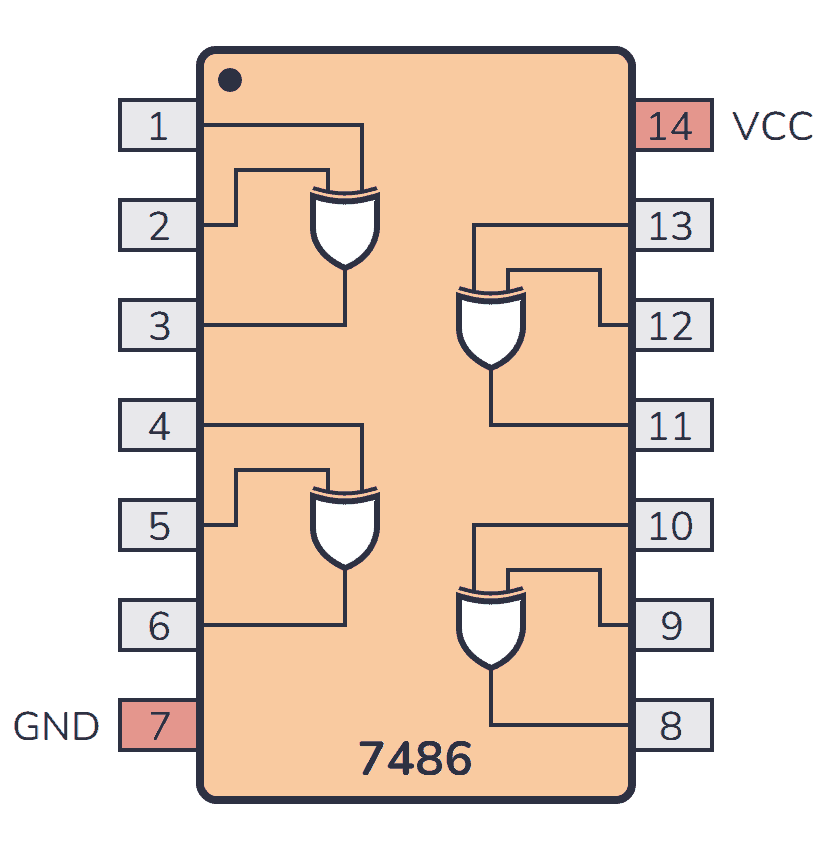
 Design with X-OR Gate in Cirkit Designer
Design with X-OR Gate in Cirkit DesignerIntroduction
- An exclusive OR (X-OR) gate is a digital logic gate that outputs true (logic high) only when the number of true inputs is odd. For a two-input X-OR gate, the output is high when one input is high, and the other is low.
- Common applications of X-OR gates include:
- Arithmetic circuits (e.g., adders and subtractors)
- Digital signal processing
- Parity checking and generation
- Data comparison circuits
- Controlled inverters in multiplexers and demultiplexers
Explore Projects Built with X-OR Gate
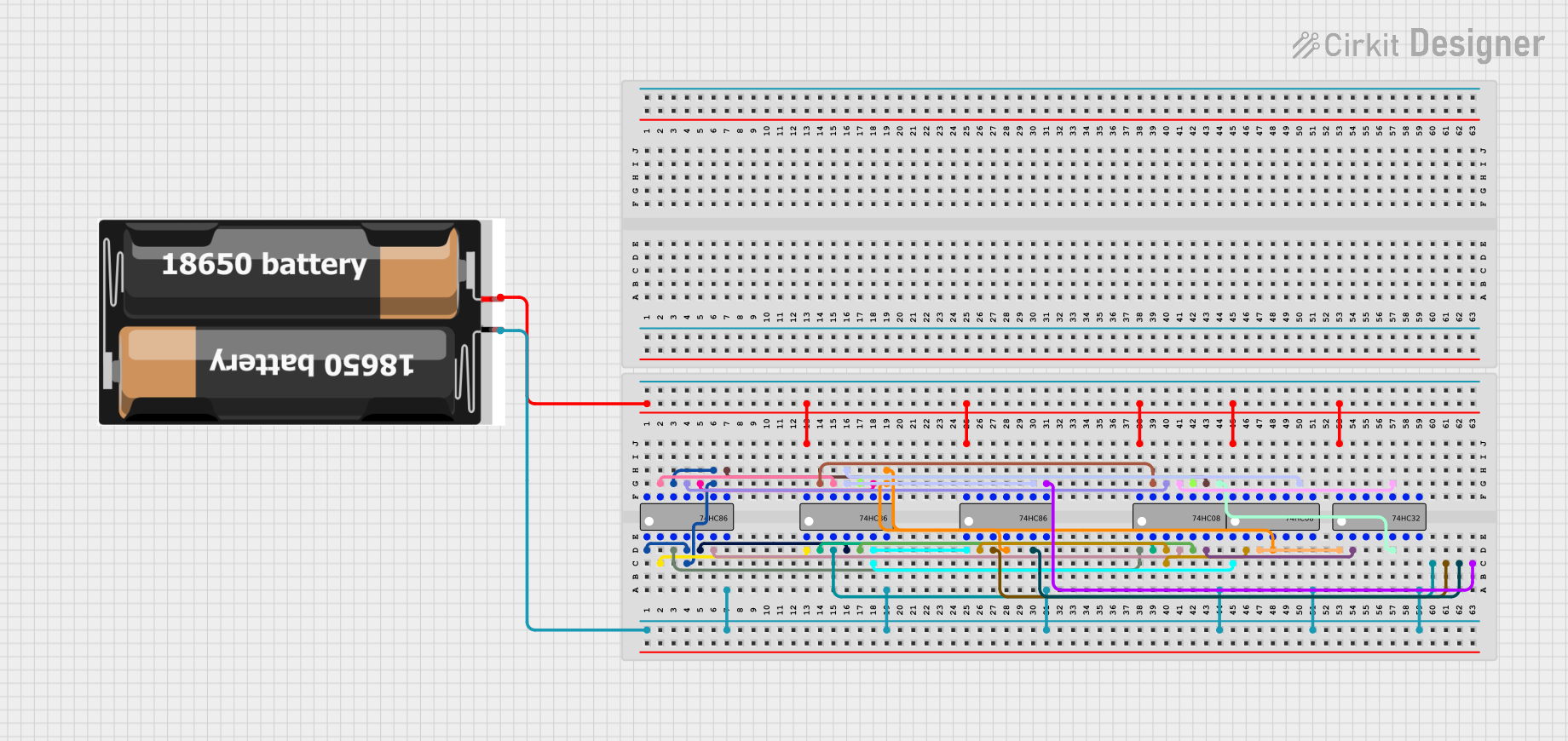
 Open Project in Cirkit Designer
Open Project in Cirkit Designer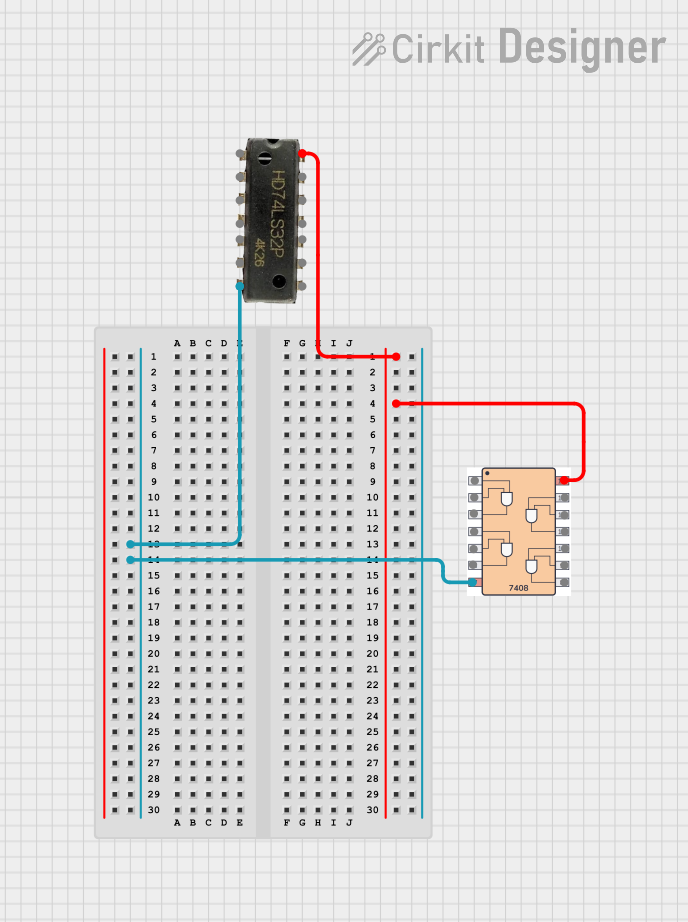
 Open Project in Cirkit Designer
Open Project in Cirkit Designer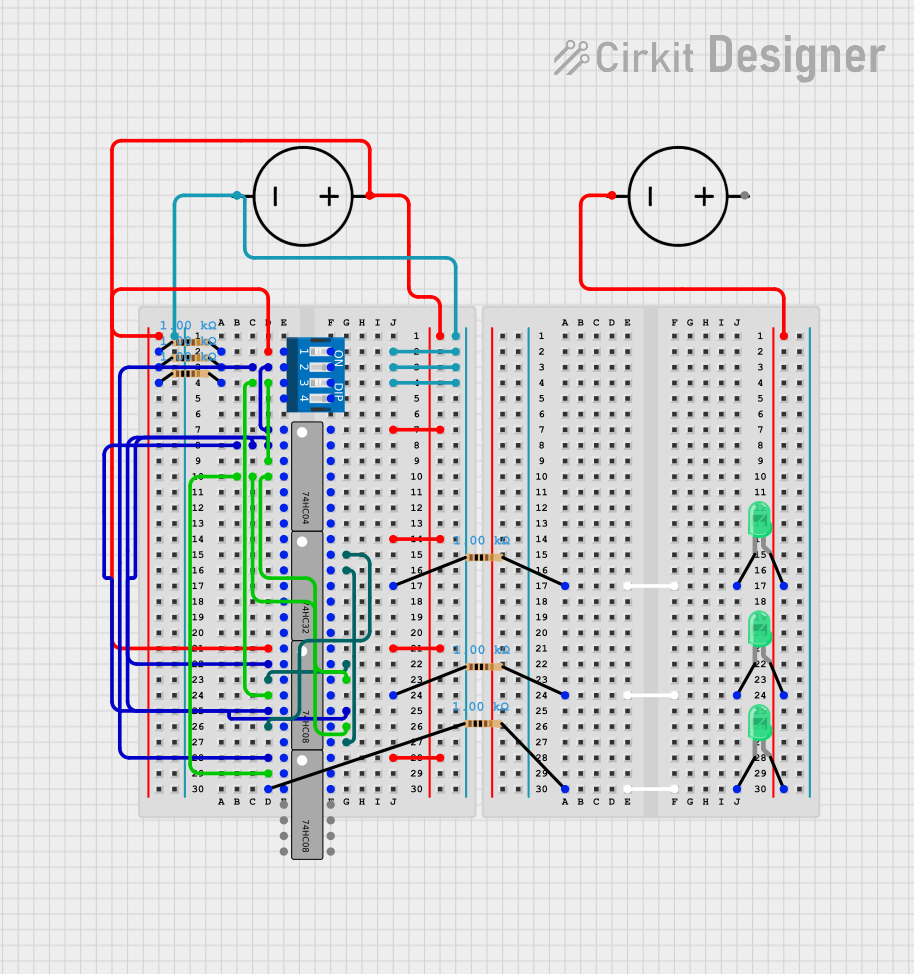
 Open Project in Cirkit Designer
Open Project in Cirkit Designer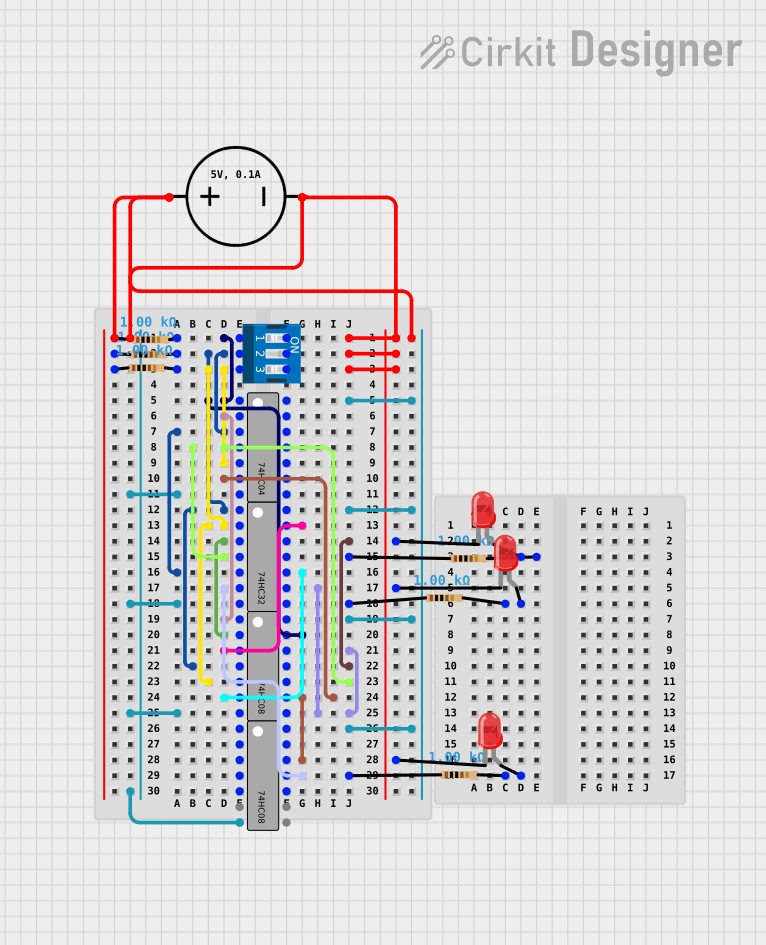
 Open Project in Cirkit Designer
Open Project in Cirkit DesignerExplore Projects Built with X-OR Gate

 Open Project in Cirkit Designer
Open Project in Cirkit Designer
 Open Project in Cirkit Designer
Open Project in Cirkit Designer
 Open Project in Cirkit Designer
Open Project in Cirkit Designer
 Open Project in Cirkit Designer
Open Project in Cirkit DesignerTechnical Specifications
- Logic Function: ( Y = A \oplus B ), where ( Y ) is the output, and ( A ) and ( B ) are the inputs.
- Voltage Levels:
- Logic Low (0): 0V to 0.8V (typical for TTL logic)
- Logic High (1): 2V to 5V (typical for TTL logic)
- Power Supply: 5V DC (for standard TTL ICs like 74LS86)
- Propagation Delay: ~10ns to 20ns (varies by IC family)
- Power Consumption: ~2mW to 10mW (varies by IC family)
Pin Configuration and Descriptions
Below is the pin configuration for the 74LS86 IC, a commonly used quad 2-input X-OR gate IC:
| Pin Number | Pin Name | Description |
|---|---|---|
| 1 | 1A | Input A for Gate 1 |
| 2 | 1B | Input B for Gate 1 |
| 3 | 1Y | Output of Gate 1 |
| 4 | 2A | Input A for Gate 2 |
| 5 | 2B | Input B for Gate 2 |
| 6 | 2Y | Output of Gate 2 |
| 7 | GND | Ground (0V) |
| 8 | 3Y | Output of Gate 3 |
| 9 | 3A | Input A for Gate 3 |
| 10 | 3B | Input B for Gate 3 |
| 11 | 4Y | Output of Gate 4 |
| 12 | 4A | Input A for Gate 4 |
| 13 | 4B | Input B for Gate 4 |
| 14 | VCC | Positive Power Supply (+5V) |
Usage Instructions
How to Use the X-OR Gate in a Circuit
- Power the IC: Connect the VCC pin (Pin 14) to a +5V DC power supply and the GND pin (Pin 7) to ground.
- Connect Inputs: Provide digital signals (logic high or low) to the input pins (e.g., 1A and 1B for Gate 1).
- Read the Output: The output pin (e.g., 1Y for Gate 1) will provide the result of the X-OR operation.
- Load Considerations: Ensure the output is connected to a load that does not exceed the IC's current driving capability (typically 8mA for TTL logic).
Important Considerations and Best Practices
- Unused Inputs: Tie unused inputs to ground or VCC to avoid floating inputs, which can cause erratic behavior.
- Decoupling Capacitor: Place a 0.1µF ceramic capacitor between VCC and GND near the IC to filter noise.
- Voltage Levels: Ensure input voltage levels are within the specified range for the IC family (e.g., TTL or CMOS).
- Fan-Out: Check the fan-out capability of the IC to ensure it can drive the connected loads.
Example: Using an X-OR Gate with Arduino UNO
Below is an example of interfacing a 74LS86 X-OR gate with an Arduino UNO:
Circuit Connections
- Connect Pin 14 (VCC) of the 74LS86 to the Arduino's 5V pin.
- Connect Pin 7 (GND) of the 74LS86 to the Arduino's GND pin.
- Connect Pins 1A and 1B (Pins 1 and 2) to Arduino digital pins 2 and 3, respectively.
- Connect Pin 1Y (Pin 3) to Arduino digital pin 4.
Arduino Code
// Define input pins for the X-OR gate
const int inputA = 2; // Input A connected to Arduino pin 2
const int inputB = 3; // Input B connected to Arduino pin 3
// Define output pin for the X-OR gate
const int outputY = 4; // Output Y connected to Arduino pin 4
void setup() {
// Set input pins as outputs to drive the X-OR gate
pinMode(inputA, OUTPUT);
pinMode(inputB, OUTPUT);
// Set output pin as input to read the X-OR gate's output
pinMode(outputY, INPUT);
// Initialize serial communication for debugging
Serial.begin(9600);
}
void loop() {
// Test case: Set input A high and input B low
digitalWrite(inputA, HIGH);
digitalWrite(inputB, LOW);
// Read the output of the X-OR gate
int xorOutput = digitalRead(outputY);
// Print the result to the Serial Monitor
Serial.print("X-OR Output: ");
Serial.println(xorOutput);
delay(1000); // Wait for 1 second before the next iteration
}
Troubleshooting and FAQs
Common Issues
No Output Signal:
- Cause: Power supply not connected or incorrect voltage.
- Solution: Verify that VCC and GND are properly connected and the supply voltage is within the IC's range.
Erratic Output:
- Cause: Floating inputs or noise on the power supply.
- Solution: Tie unused inputs to VCC or GND and add a decoupling capacitor near the IC.
Incorrect Logic Levels:
- Cause: Input signals are not within the specified voltage range.
- Solution: Ensure the input signals meet the logic level requirements of the IC.
Overheating:
- Cause: Excessive current draw from the output pins.
- Solution: Check the load connected to the output and ensure it is within the IC's current driving capability.
FAQs
Q: Can I use the X-OR gate with a 3.3V power supply?
A: Standard TTL ICs like the 74LS86 require a 5V supply. For 3.3V operation, use a CMOS variant like the 74HC86.Q: What happens if both inputs are high?
A: The output will be low because the X-OR gate outputs high only when the number of high inputs is odd.Q: Can I cascade multiple X-OR gates?
A: Yes, you can cascade X-OR gates to create more complex logic functions, but ensure the output of one gate can drive the input of the next.Q: How do I test the X-OR gate without an Arduino?
A: Use a simple circuit with switches for inputs and an LED for the output. Toggle the switches to observe the X-OR behavior.